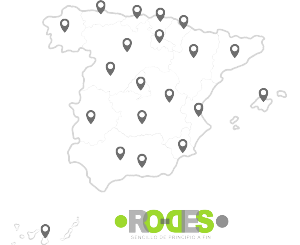Shall we call you?
The vehicle recycling process: Everything you need to know
End-of-life vehicles (ELVs) must be processed at an Authorized Treatment Center (C.A.T.), where they are decontaminated and dismantled for recycling. Many parts of the car still have commercial value as second-hand spare parts, and other components can be given a second life, recycled, or repurposed for other uses.
Between 10% and 12% of a vehicle is used to produce energy, and between 88% and 90% is recycled into other materials! The Spanish Association for the Environmental Treatment of End-of-Life Vehicles claims that recycling cars can save a million tons of CO2.
Documents needed
Collection tow truck
Dismantling at C.A.T.
Certificate of destruction
Vehicle recycling
How is a vehicle recycled?
-
Vehicles are received at Authorized Treatment Centers (C.A.T.), also known as scrapyards.
-
After a depollution stage where batteries, liquids, plastics, textiles, and wiring are removed, the recyclable materials are evaluated.
-
Once only metals remain, they are compressed to reduce their volume for storage and transportation.
-
Each type of material is directed to its respective recycling and/or storage facility.
Recycling the car: What part is used for what purpose?
- Airbags: Neoprene can be reused.
- Batteries: Lead is used in the metallurgy industry (perhaps in new cars); plastic can be used to manufacture new batteries.
- Seat Belts: Can be used as fibers in insulation materials, carpet bases.
- Glass, Windshields, Headlights: Processed together, most is used to make bottles and fibers, such as glass wool.
- Indicators and Tail Lights: These are made from a mixture of different plastics with adhesives, and a technique has been developed to separate them.
- Various Fluids (engine, transmission, hydraulic systems, etc.): Once regenerated, they can be reused as lubricants or as fuel in facilities prepared for it, due to their calorific value.
- Tires: They can be retreaded; if not, the rubber can be shredded and used to make sports track floors or playgrounds. They can also be burned to produce thermal energy.
- Large Plastic Parts (bumpers, liquid tanks, dashboards, etc.): Shredded and reused.
- Flexible Plastic (strips, bands, etc.): Once shredded, it can be used to produce thermal energy in incinerators or cement plants; part of it is also used as drainage material.

Advance your request by sending them to us via WhatsApp

